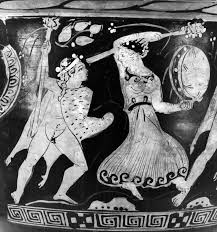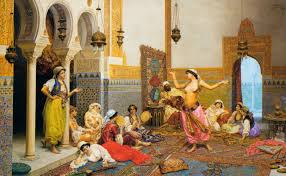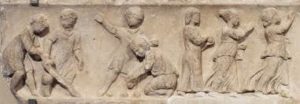Ancient Roman Dancers: Rome as a conquering imperial power represented nearly the whole world of its day, and its dances accordingly were most numerous. Amongst the illustrations already given, we have many that were preserved in Rome. In the beginning of its existence as a power, only religious dances were practiced, and many of these were of Etruscan origins, such as the Lupercalia, and the Ambarvalia.

Ancient Roman Dancers facts
In the former the Roman Dancers were semi-nude, and more rurally ritual; the latter was a serious dancing procession through fields and villages. That the Etruscan, Sabellian, Oscan, Samnite, and other national dances of the country had some influence on the art in Rome could have been highly probable, but the paucity of early Roman examples renders the evidence difficult.
As the State increased in power by conquest, it absorbed with other countries other habits, and the art degenerated often, like that of Greece and Etruria, into a vehicle for orgies, when they brought to Rome with their Asiatic captives even more licentious practices and dances. No Roman citizen danced except in the religious dances.

Education in Dancing
The education in dancing and gesture were important in the actor, as masks prevented any display of feature. The position of the actor was never recognized professionally and was considered Iinfamia. Eventually, the performers of lower class occupied the dancing platform, and the wealthy class was happy to be entertained.
While accordingly the taking part in the masked farces with stereotyped characters, that formed the usual native amusement, was looked upon as an innocent youthful frolic, the appearing on a public stage for money and without a mask was considered as directly infamous, and the singer and poet were in this respect placed quite on a level with the rope-dancer and the harlequin.
Urban magistrates were legally entitled to inflict bodily chastisement and imprisonment on any actor at any time and at any place. The necessary effect of this was that dancing, music, and poetry, at least so far as they appeared on the public stage, fell into the hands of the lowest classes of the Roman burgesses, and especially into those of foreigners.
Roman Classical Music
Roman Classical Music Orchestras, choirs, chamber ensembles, opera companies, renowned Solisti virtuosi of every instrument, of every voice and also of every shape, size, and lifestyle headed to Rome on annual performance pilgrimages, there to join home-grown groups and performers in the production of “classical” music.

Ritual and ceremonial
Ritual and ceremonial the Roman Dancers had dancing had played a significant role in ancient Rome. Dance had also been important in early Judaism in the ancient Near East, and there is mention in both editions of the Talmud as well as in the Responsa.
However, dance was not part of early Christian religious practices because according to some of the scholars, in Christianity the journey of the soul was regarded as a never-ending war against the flesh because body and soul were conceived of as being in opposition. This quite unbiblical denigration of the physical aspect of human nature proposed the views that dance had no place in Christian devotions.
Medieval Dance Characteristics
In Roman Dancers, although there are records of sacred dancing within the medieval Christian church, the official position of medieval church clergy was ambivalence. Vehemently against any aspects of pagan ceremonies, church leaders could not, however, deny that dance was mentioned in early biblical writings as part of joyous celebrations.
Medieval religious visual arts often represented positive images of dance and music, but the dance was never admitted into the Roman Catholic liturgy.

The wealthy were very lucky in every part of living, and they always lived comfortably. For the wealthy, to have entertainment they would host parties, or attend them. Instead of having a party they might as well have a stuffing banquet.
Dancing and Singing
In Ancient Rome Dancers, Dancing and Singing to music was another common thing to do for fun in the Roman mind. Rich Roman’s would also hold parties where everyone would form a circle and a person or two would share a piece of work that they created, such as poetry or a song.
A professional could be paid to come and dance for the party, or if they were talented enough they would sing too. There were lots of villains and if that didn’t appeal to a person then it would so to the jugglers in the streets. Many people also enjoyed watching acrobats, musicians playing instruments such as pan-pipes and the lyre.




